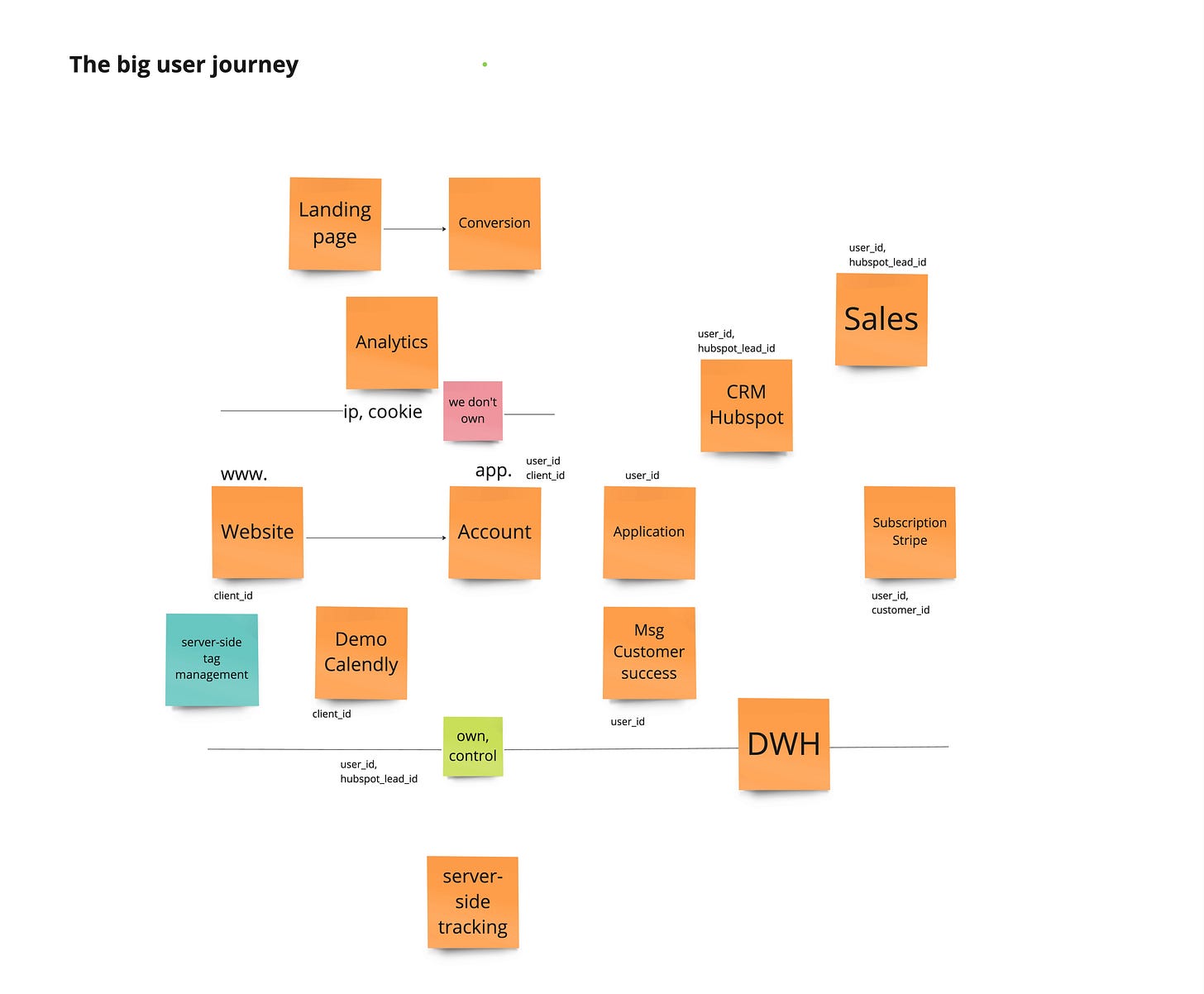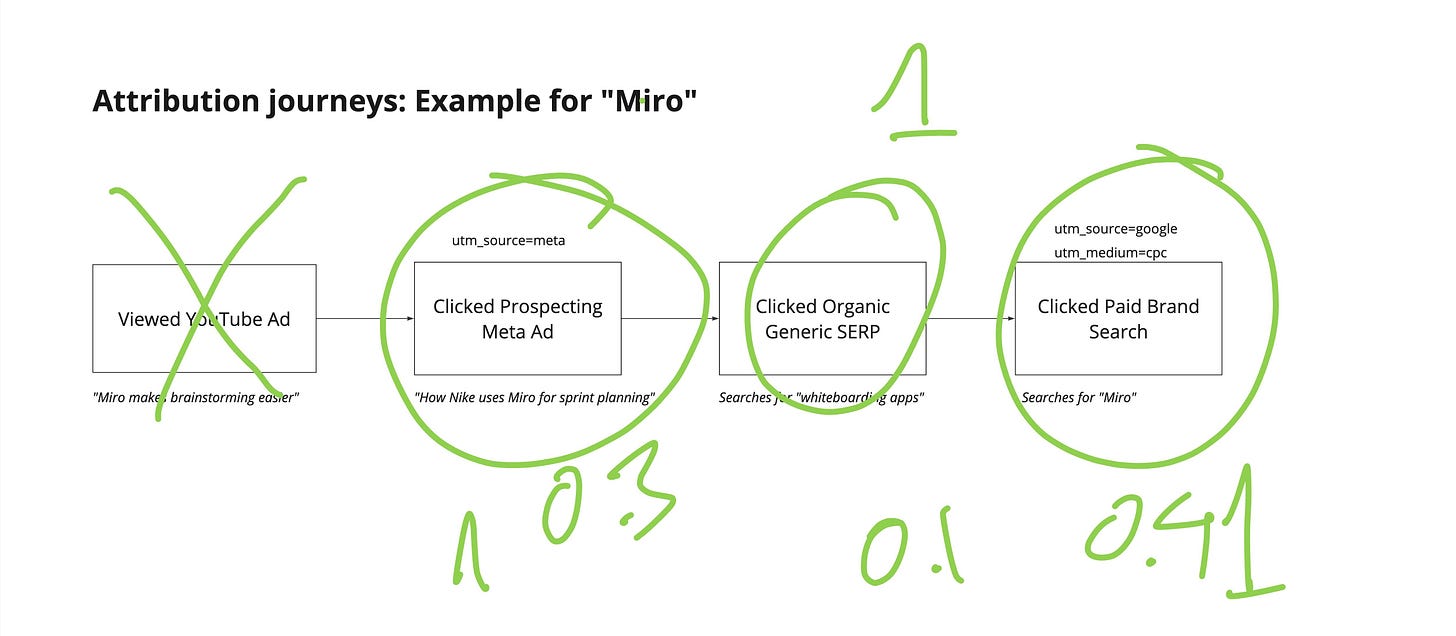Tackling marketing attribution: key learnings from our Attribution Masterclass
What we've taught on measuring true campaign performance and proving marketing ROI.
In our Marketing Attribution Masterclass with Timo Dechau, we explored how modern marketing teams can effectively measure campaign performance in today's privacy-first digital landscape. This article summarizes the key insights shared during the course.
If you want to sign up for future classes, head to our website and join the waitlist. Our next free cohort (on March 27th) is already sold out, but you can purchase the 4-hour on-demand course here.
Why attribution matters now (and ever)
Modern marketing teams face an unprecedented challenge: while channels and touchpoints multiply, our ability to track them traditionally diminishes. Privacy changes are breaking conventional attribution models just as marketing teams need better insights than ever to justify and optimize their spend.
In the course, we taught marketing and leaders how to:
Build attribution frameworks that work in a privacy-first world
Measure the true impact of both brand and performance campaigns
Make confident budget decisions with incomplete data
Build stakeholder buy-in for sophisticated measurement approaches
Implement practical attribution solutions that drive results
Attribution fundamentals and the risks of broken attribution
We started by estabilishing why traditional attribution approaches are breaking down. This foundational knowledge is particularly crucial for teams investing heavily in both brand and performance marketing, as misattribution can lead to drastically undervaluing brand initiatives while over-crediting bottom-funnel campaigns.
Misattribution can lead to drastically undervaluing brand initiatives while over-crediting bottom-funnel campaigns.
As one participant noted: "We're spending six figures monthly on marketing, but can't confidently say which channels drive results."
We explored several critical challenges:
Privacy changes (ATT, GDPR) limiting tracking capabilities
Non-clickable touchpoints like podcasts being hard to measure
Cross-device journeys breaking conventional models (specially for social)
Different stakeholders interpreting data differently
No single tool or model fully capturing marketing's impact
Key Learning: The Multi-Method Framework
Rather than seeking one perfect attribution model, we learned why successful teams need multiple complementary approaches:
1. Click-Based Attribution
Best for: Direct response campaigns, search marketing
Limitations: Misses upper-funnel impact
2. Marketing Mix Modeling (MMM)
Best for: Channel-level budget decisions
Requirements: Significant spend ($100K+/month)
3. Incrementality Testing
Best for: Measuring incremental sessions or conversions from strategies
Methods: Geographic holdouts, A/B tests
4. Zero-Party Data
Best for: Capturing the user-perceived impact of campaigns that don’t generate clicks
Methods: Post-purchase surveys, sales calls, lead forms
Multi-Touch Attribution (MTA) and why it’s best for click strategies
We examined the practical implementation of MTA, using real examples to understand its strengths and limitations. While MTA isn't the complete solution many vendors promise, it remains valuable for optimizing digital campaigns when implemented correctly—particularly for businesses with primarily online customer journeys and significant digital ad spend.
Case Study: The Modern Customer Journey
We analyzed this common scenario: A user views a YouTube ad, clicks a Meta prospecting ad, performs an organic search, and converts through a branded search ad. Through this example, participants learned:
Why last-click attribution misses critical touchpoints
How mobile app interactions break tracking
Why view-through conversions matter
The impact of cross-device journeys
How cookie limitations affect data collection
Implementing and rolling out MTA
Participants learned practical implementation steps:
Setting up proper UTM parameters
Implementing tracking across platforms
Handling cross-device attribution
Working with privacy restrictions
Advanced measurement techniques, like MMM and incrementality
Sophisticated measurement approaches, like Marketing Mix Modeling and Incrementality Testing, are gaining traction. These advanced techniques become essential when dealing with significant marketing budgets ($100K+/month) across multiple channels, particularly when traditional tracking methods can't capture the full customer journey due to privacy restrictions or offline touchpoints.
Marketing Mix Modeling
We covered:
Data requirements (12+ months historical data)
Budget considerations
Implementation steps
Common pitfalls
When to use MMM vs. other methods
Incrementality Testing
Participants learned:
Different testing methodologies
Setting up holdout tests
Measuring true incremental impact
Statistical significance requirements
Real-world implementation challenges
Session x Conversion Incrementality
Building your attribution roadmap, getting started with an MVP
We provided a practical framework for implementing attribution in phases. This was particularly valuable for teams needing to build stakeholder buy-in and create a clear path to better attribution, showing how to start with quick wins while building toward more sophisticated measurement. After all, for a successful attribution strategy; marketing, data and engineering teams must work together.
Our recommendation was to start with implementing best practices and rolling out MVPs alternative forms of measurement to get buy-in, such as:
Implement proper UTM parameters
Set up basic analytics tracking
Start collecting zero-party data
Common Pitfalls We Addressed
Throughout the course, we helped participants avoid common mistakes:
1. Over-reliance on Last Click
Impact: Undervaluing awareness channels
Solution: We demonstrated multiple attribution methods
2. Tool Obsession
Impact: Focusing on tools over strategy
Solution: Participants learned to start with business questions
3. Seeking Perfect Attribution
Impact: Analysis paralysis
Solution: Understanding model limitations
4. Ignoring Incrementality
Impact: Misattributing natural demand
Solution: Practical incrementality testing approaches
Don’t forget to join our upcoming cohort or purchase a recording
Our next free live Attribution Masterclass is this month, and it’s already sold out. However, you can always enter the waitlist for future cohorts on the site or purchase the 4-hour on demand course here.







